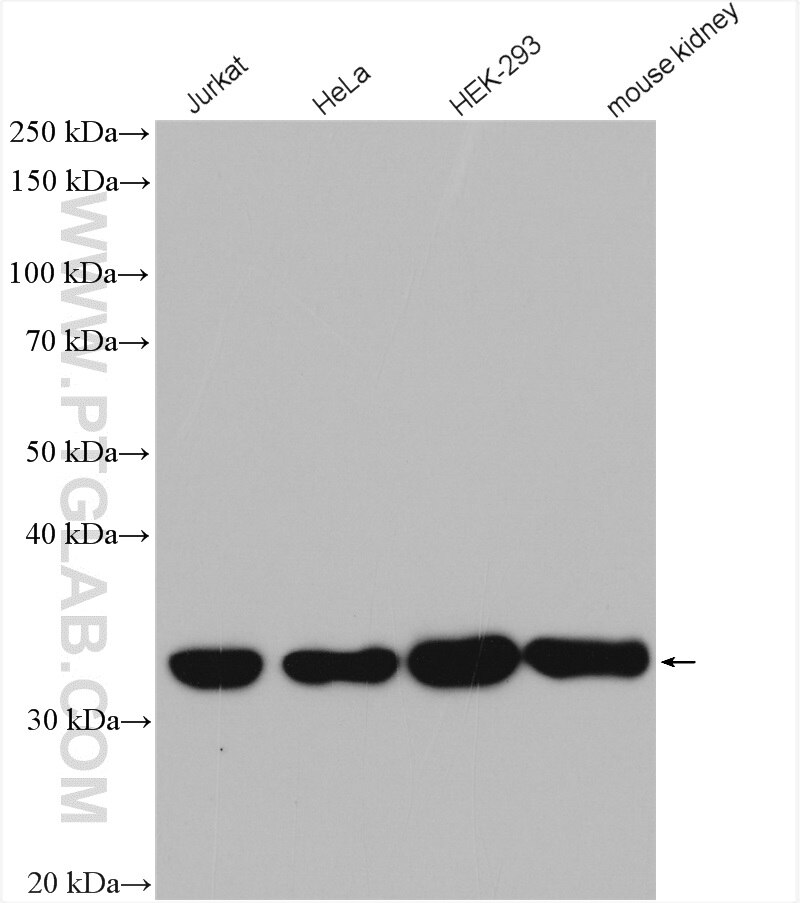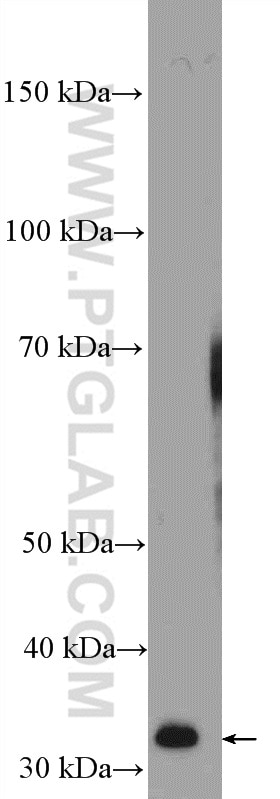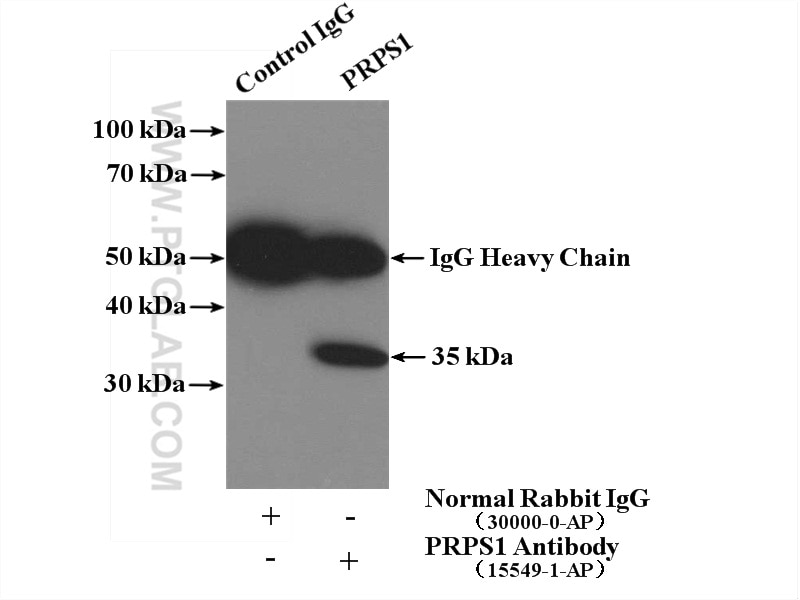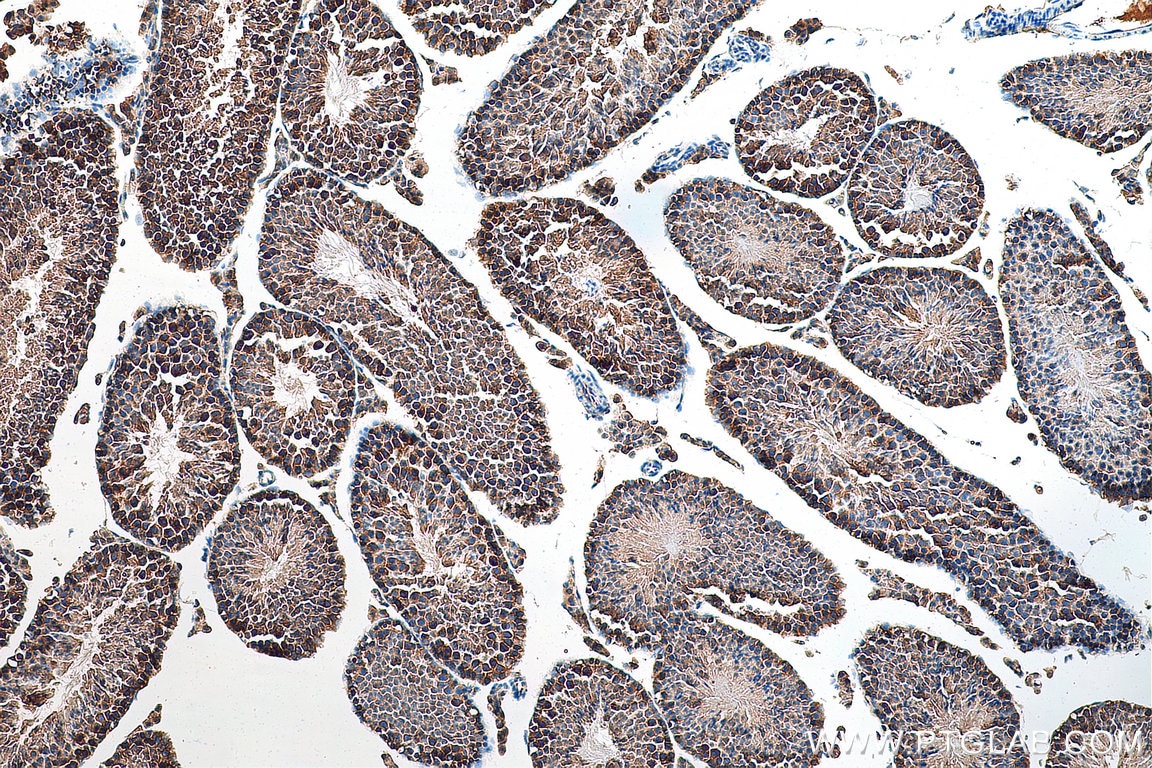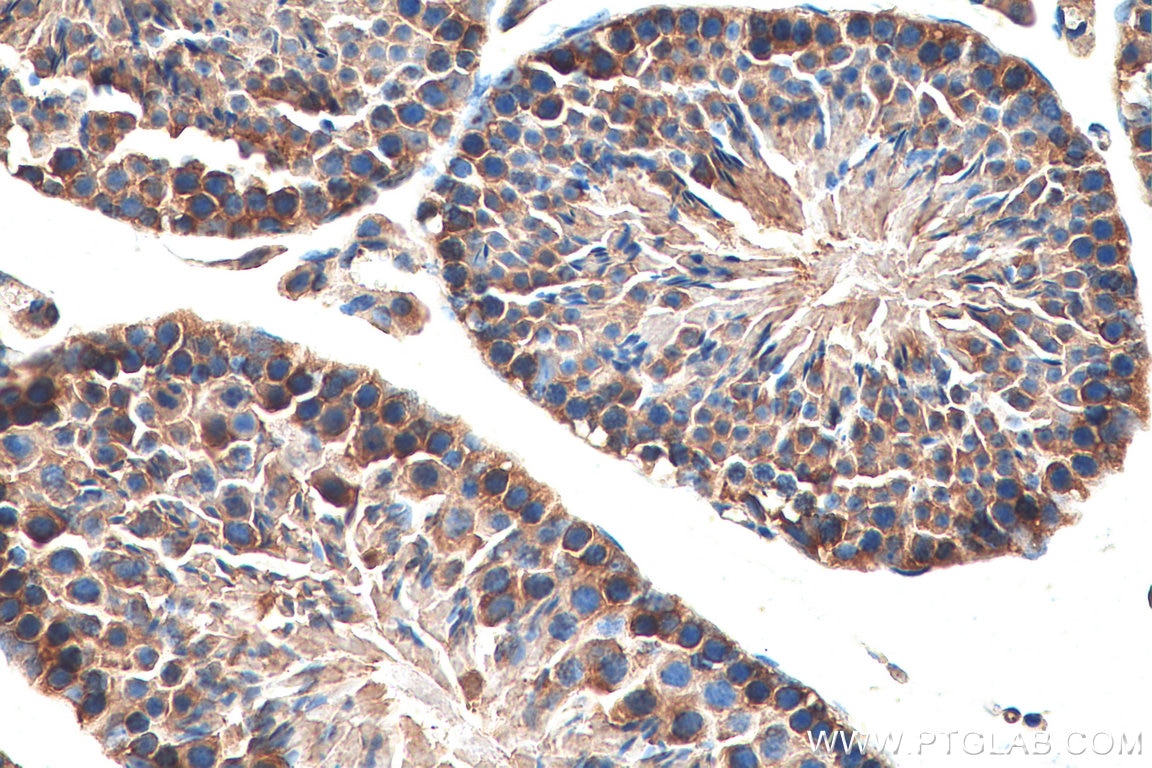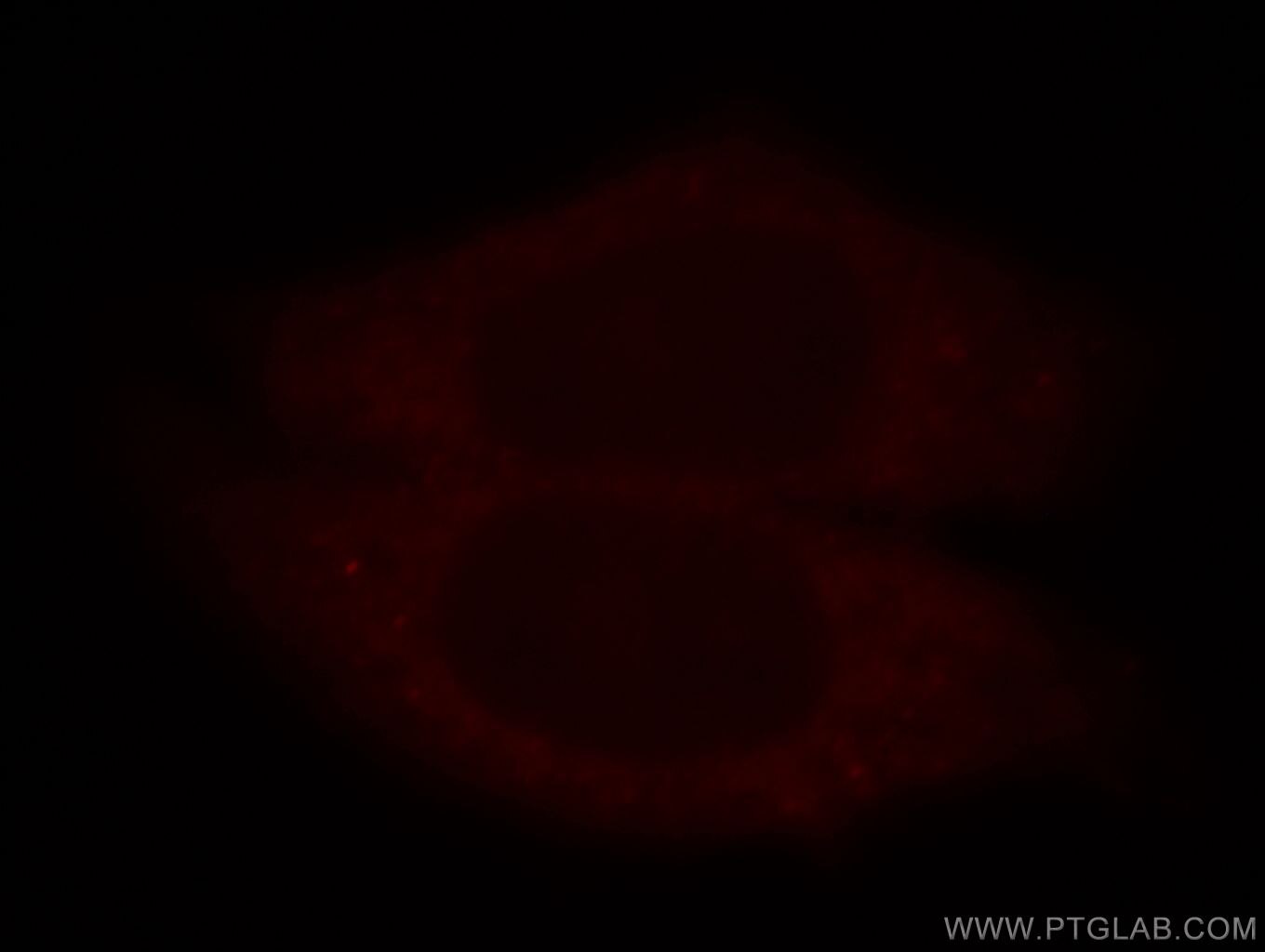PRPS1 Polyklonaler Antikörper
PRPS1 Polyklonal Antikörper für IF, IHC, IP, WB, ELISA
Wirt / Isotyp
Kaninchen / IgG
Getestete Reaktivität
human, Maus, Ratte
Anwendung
WB, IP, IHC, IF, CoIP, ELISA
Konjugation
Unkonjugiert
Kat-Nr. : 15549-1-AP
Synonyme
Galerie der Validierungsdaten
Geprüfte Anwendungen
| Erfolgreiche Detektion in WB | Jurkat-Zellen, HEK-293-Zellen, HeLa-Zellen, Mausnierengewebe, Rattenmilzgewebe |
| Erfolgreiche IP | HeLa-Zellen |
| Erfolgreiche Detektion in IHC | Maushodengewebe Hinweis: Antigendemaskierung mit TE-Puffer pH 9,0 empfohlen. (*) Wahlweise kann die Antigendemaskierung auch mit Citratpuffer pH 6,0 erfolgen. |
| Erfolgreiche Detektion in IF | HepG2-Zellen |
Empfohlene Verdünnung
| Anwendung | Verdünnung |
|---|---|
| Western Blot (WB) | WB : 1:1000-1:6000 |
| Immunpräzipitation (IP) | IP : 0.5-4.0 ug for 1.0-3.0 mg of total protein lysate |
| Immunhistochemie (IHC) | IHC : 1:50-1:500 |
| Immunfluoreszenz (IF) | IF : 1:10-1:100 |
| It is recommended that this reagent should be titrated in each testing system to obtain optimal results. | |
| Sample-dependent, check data in validation data gallery | |
Veröffentlichte Anwendungen
| KD/KO | See 3 publications below |
| WB | See 8 publications below |
| IHC | See 3 publications below |
| IF | See 1 publications below |
| CoIP | See 1 publications below |
Produktinformation
15549-1-AP bindet in WB, IP, IHC, IF, CoIP, ELISA PRPS1 und zeigt Reaktivität mit human, Maus, Ratten
| Getestete Reaktivität | human, Maus, Ratte |
| In Publikationen genannte Reaktivität | human |
| Wirt / Isotyp | Kaninchen / IgG |
| Klonalität | Polyklonal |
| Typ | Antikörper |
| Immunogen | PRPS1 fusion protein Ag7907 |
| Vollständiger Name | phosphoribosyl pyrophosphate synthetase 1 |
| Berechnetes Molekulargewicht | 318 aa, 35 kDa |
| Beobachtetes Molekulargewicht | 35 kDa |
| GenBank-Zugangsnummer | BC001605 |
| Gene symbol | PRPS1 |
| Gene ID (NCBI) | 5631 |
| Konjugation | Unkonjugiert |
| Form | Liquid |
| Reinigungsmethode | Antigen-Affinitätsreinigung |
| Lagerungspuffer | PBS mit 0.02% Natriumazid und 50% Glycerin pH 7.3. |
| Lagerungsbedingungen | Bei -20°C lagern. Nach dem Versand ein Jahr lang stabil Aliquotieren ist bei -20oC Lagerung nicht notwendig. 20ul Größen enthalten 0,1% BSA. |
Hintergrundinformationen
PRPS1, also named as Ribose-phosphate pyrophosphokinase 1, is a 318 amino acid protein, which belongs to the ribose-phosphate pyrophosphokinase family. PRPS1 can form Homodimer and the active form is probably a hexamer composed of 3 homodimers. PRPS1 catalyzes the synthesis of phosphoribosylpyrophosphate (PRPP) that is essential for nucleotide synthesis. PRPS1 as a module has an association with the Hepatocellular carcinoma.
Protokolle
| Produktspezifische Protokolle | |
|---|---|
| WB protocol for PRPS1 antibody 15549-1-AP | Protokoll herunterladen |
| IHC protocol for PRPS1 antibody 15549-1-AP | Protokoll herunterladen |
| IF protocol for PRPS1 antibody 15549-1-AP | Protokoll herunterladen |
| IP protocol for PRPS1 antibody 15549-1-AP | Protokoll herunterladen |
| Standard-Protokolle | |
|---|---|
| Klicken Sie hier, um unsere Standardprotokolle anzuzeigen |
Publikationen
| Species | Application | Title |
|---|---|---|
Science mTORC1 induces purine synthesis through control of the mitochondrial tetrahydrofolate cycle. | ||
Sci Adv NOTCH1-driven UBR7 stimulates nucleotide biosynthesis to promote T cell acute lymphoblastic leukemia. | ||
J Invest Dermatol Enhanced Glycogen Metabolism Supports the Survival and Proliferation of HPV-Infected Keratinocytes in Condylomata Acuminata. | ||
Front Cell Dev Biol Thyroid Hormone-Regulated Expression of Period2 Promotes Liver Urate Production. | ||
Amino Acids Quantitative proteomic dissection of a native 14-3-3ε interacting protein complex associated with hepatocellular carcinoma. |
